Evolution of User Interfaces: UX/UI Design for Business Applications
EPA System / News & Eventi

The design of user interfaces (UI) and user experience (UX) has become a fundamental element in the development of successful business applications. The main goal of UX/UI design is to create an intuitive, engaging, and satisfying user experience. This article will explore the evolution of user interfaces in business applications and provide an overview of best practices and key principles for UX/UI design.
**Importance of UX/UI Design in Business Applications**
In the current digital business landscape, business applications play a crucial role in supporting daily operations and improving process efficiency. Well-designed user interfaces can make the difference between an application that is regularly used and one that is abandoned. UX/UI design is essential to ensure that business applications are user-friendly, intuitive, and able to meet user needs.
An intuitive and well-structured user interface can minimize the learning curve for new users, enabling them to start using the application quickly and seamlessly. Additionally, effective UX/UI design can enhance employee productivity by reducing errors and simplifying complex tasks.
**Evolution of User Interfaces in Business Applications**
User interfaces in business applications have undergone significant evolution over the years. In the past, business applications were characterized by complex and unintuitive interfaces that required extensive training to be used correctly. However, with the advent of web and mobile technologies, user interfaces have become increasingly intuitive and user-friendly.
Modern user interfaces feature clean and minimalist designs, emphasizing the key functionalities of the application. Smooth animations and transitions are used to enhance the user experience and make using the application more enjoyable. Furthermore, with the rise of touch technologies, user interfaces have been optimized for interaction on small screens, allowing users to access application features quickly and intuitively.
**Key Principles of UX/UI Design for Business Applications**
Several key principles guide UX/UI design for business applications. Firstly, simplicity is crucial. A simple and intuitive user interface is essential to enable users to perform their tasks quickly and seamlessly. Minimizing the number of steps required to complete an action and using clear and understandable language are fundamental to ensuring a positive user experience.
Another important principle is accessibility. Business applications must be accessible to all users, regardless of their level of technical expertise or any disabilities they may have. Designing a user interface that is clear, readable, and easily navigable for all users is essential.
Lastly, the feedback principle is crucial for UX/UI design. Users should receive timely feedback on the actions they are performing, such as through confirmation messages or visual notifications. This helps users understand whether their actions have been executed correctly and guides them during the use of the application.
**Design Thinking Process for UX/UI Design**
The Design Thinking process is a systematic approach to design based on empathy, understanding the context, and generating innovative solutions. This approach can be applied to UX/UI design for business applications to ensure a high-quality user experience.
The first step of the Design Thinking process is immersion, involving an understanding of user needs and the context in which the application will be used. This can be done through user interviews, field observations, and analysis of business requirements.
The second step is definition, translating the information gathered during immersion into clear and specific requirements for UI design. This includes creating user personas that represent different types of users who will use the application.
The third step is the ideation phase, where various design solutions are generated to meet the requirements defined in the definition phase. This can be done through brainstorming sessions and rapid prototyping.
The fourth step is the prototyping phase, where user interface prototypes are created to test the solutions generated earlier. This allows for collecting feedback from users and making any necessary changes or improvements to the design.
Finally, the fifth step is the testing and iteration phase, where user interface testing is conducted with end-users. This helps identify any issues or weaknesses in the design and further improve the user experience.
**Best Practices for UX/UI Design in Business Applications**
There are some best practices that can be followed to ensure high-quality UX/UI design in business applications. Firstly, it is important to conduct in-depth research on users and understand their needs, goals, and the context in which they will use the application. This helps create a user interface that meets user expectations and is easy to use.
Secondly, using responsive design is advisable, allowing the user interface to adapt to different devices and screen sizes. This ensures that the application is accessible and usable on a variety of devices, including desktop computers, smartphones, and tablets.
Thirdly, attention should be paid to information organization and application navigation. The user interface should be logically and intuitively structured, with a clear organization of features and content. Simple and well-designed navigation allows users to easily find what they need.
Finally, it is crucial to test the user interface with end-users to gather feedback and make any necessary changes or improvements. This can be done through user testing sessions or by using user behavior analysis tools.
**Challenges in UX/UI Design for Business Applications**
UX/UI design for business applications can pose some unique challenges. One of the main challenges is balancing user needs with business requirements. Business applications must meet a range of functional and business requirements while also being easy to use and intuitive for users.
Another challenge is integration with existing systems. Business applications often need to interact with legacy systems or other existing applications within the organization. Ensuring that the user interface is consistent with other systems and that data can be exchanged efficiently can be a complex challenge.
Finally, UX/UI design for business applications must take into account the security and privacy needs of businesses. Business applications often handle sensitive or confidential data, so it is important to ensure that the user interface provides adequate access control and data protection.
**Case Study: Successful UX/UI Projects in Business Applications**
To illustrate the importance of UX/UI design in business applications, let’s consider some case studies of successful projects. One company implemented a new human resources management system with an intuitive and user-friendly user interface. This allowed employees to quickly and easily access information about vacations, payrolls, and company policies, improving efficiency and employee satisfaction.
Another case study involves a project management application for a consulting company. The user interface was designed to allow project managers to track projects, deadlines, and resources in a simple and intuitive way. This improved collaboration among team members and increased efficiency in project management.
**Leading Companies in UX/UI Design for Business Applications**
In today’s landscape, there are several leading companies in UX/UI design for business applications. Some of these include IBM, Microsoft, SAP, and Salesforce. These companies are known for the quality of their UX/UI design and their attention to detail in creating engaging and intuitive user experiences.
**Hiring UX/UI Designers for Business Applications**
Hiring competent UX/UI designers is essential to ensure high-quality design for business applications. UX/UI designers should have a solid understanding of design principles and industry best practices. They should also be able to collaborate with other team members, such as developers and product managers, to create a consistent and high-quality user interface.
Companies can hire UX/UI designers through job postings, recruitment agencies, or networking. It is important to assess the skills and experience of candidates and look for individuals who have a good understanding of business needs and application goals.
In conclusion, UX/UI design is crucial to the success of business applications. Intuitive and well-designed user interfaces can improve operational efficiency, employee satisfaction, and collaboration among team members. Following key UX/UI design principles, using the Design Thinking process, and adhering to industry best practices can help companies create high-quality user experiences. With the evolution of user interfaces in business applications, UX/UI design will continue to play a crucial
role in improving business operations and increasing productivity.


